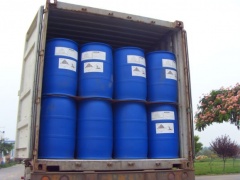Methyl methacrylate (MMA)
| Infobox on Methyl methacrylate (MMA) | |
|---|---|
| Example of Methyl methacrylate (MMA) |  |
| Facts | |
| Origin | - |
| Stowage factor (in m3/t) | - |
| Humidity / moisture | - |
| Ventilation | - |
| Risk factors | See text |
Methyl methacrylate (MMA)
Contents
Description / Application
Methyl methacrylate is an organic compound. This colourless, volatile liquid, the methyl ester of methacrylic acid (MAA) is a monomer produced on a large scale for the production of poly(methyl methacrylate) (PMMA).
The compound is manufactured by several methods, the principal one being the acetone cyanohydrin (ACH) route, using acetone and hydrogen cyanide as raw materials. The intermediate cyanohydrin is converted with sulfuric acid to a sulfate ester of the methacrylamide, methanolysis of which gives ammonium bisulfate and MMA. Although widely used, the ACH route coproduces substantial amounts of ammonium sulfate. Some producers start with an isobutylene or, equivalently, tert-butanol, which is sequentially oxidized first to methacrolein and then to methacrylic acid, which is then esterified with methanol. Propene can be carbonylated in the presence of acids to isobutyric acid, which undergoes subsequent dehydrogenation. The combined technologies afford more than 3 billion kilograms per year. MMA can also be prepared from methyl propionate and formaldehyde.
The principal application, consuming approximately 80% of the MMA, is the manufacture of polymethyl methacrylate acrylic plastics (PMMA). Methyl methacrylate is also used for the production of the co-polymer methyl methacrylate-butadiene-styrene (MBS), used as a modifier for PVC.
Shipment / Storage / Risk factors
Flammable, dangerous fire risk, explosive limits in air 2,1-12,5%. TLV: 100 ppm in air.
Flash point: 13°C (closed cup); 19°C (open cup)
Auto-ignition temperature: 421°C
Boiling point: 100°C
Melting point: -48°C
For overseas carriage aspects of Chemicals, the readers are recommended to acquire or have access to a good chemical dictionary, and a copy of the International Maritime Dangerous Goods (IMDG) Code, issued by the International Maritime Organisation. Also consult the applicable MSDS sheet.
See also: http://www.chemicalland21.com/plasticrawmaterial/pvc/MBS.htm











